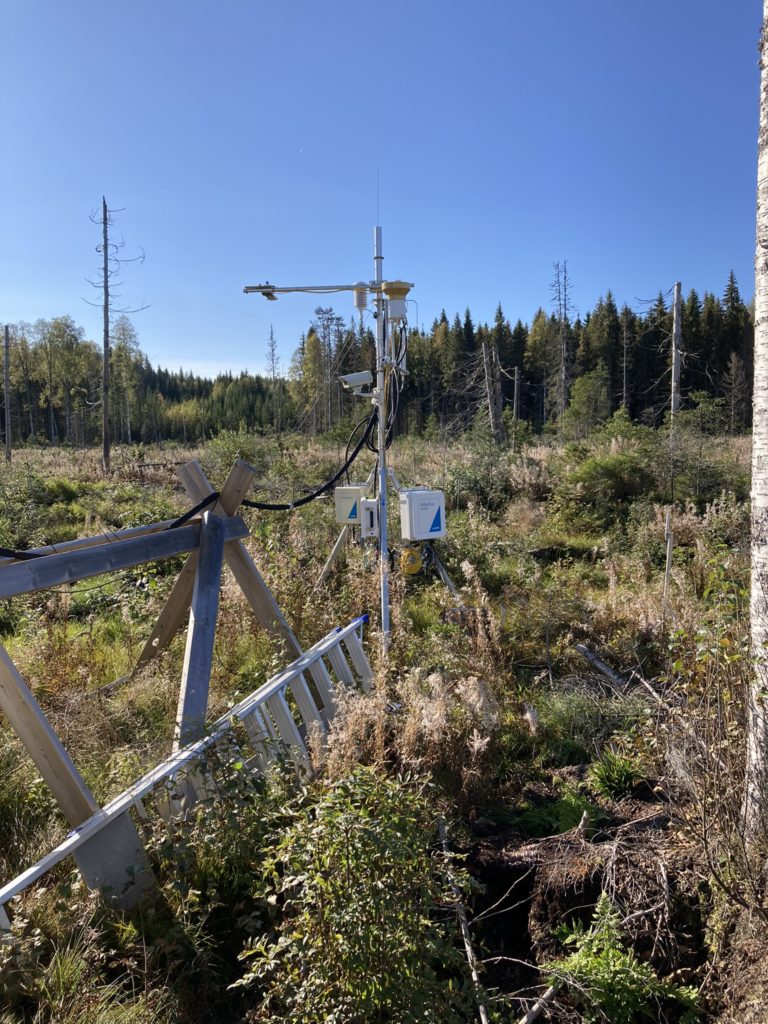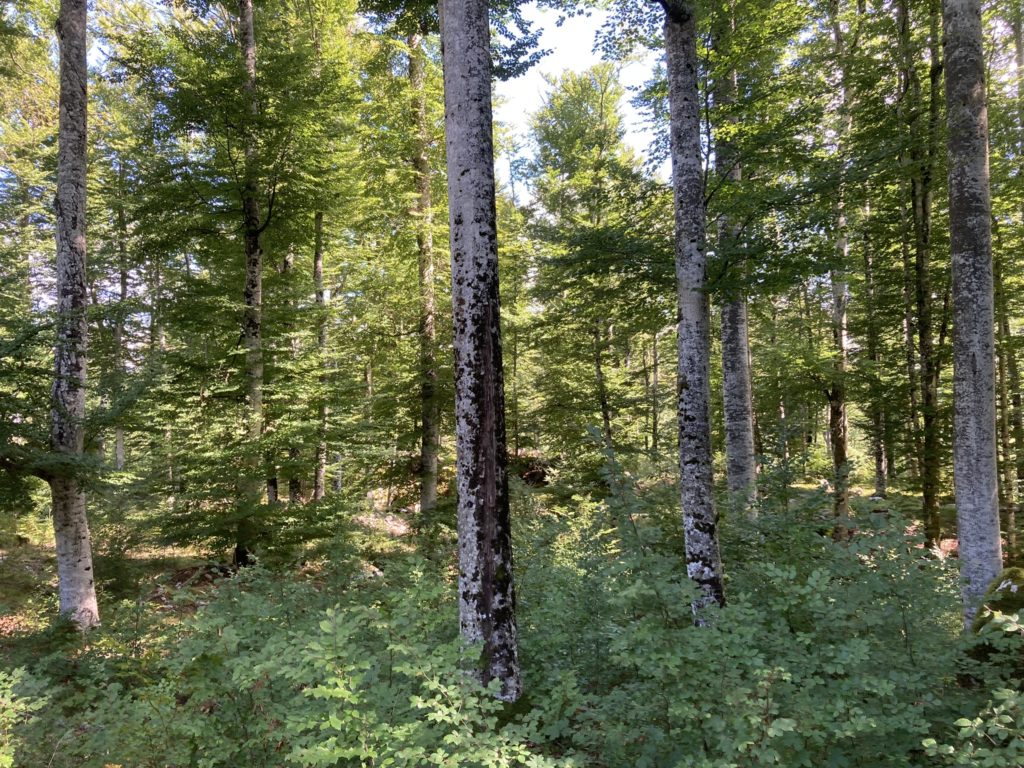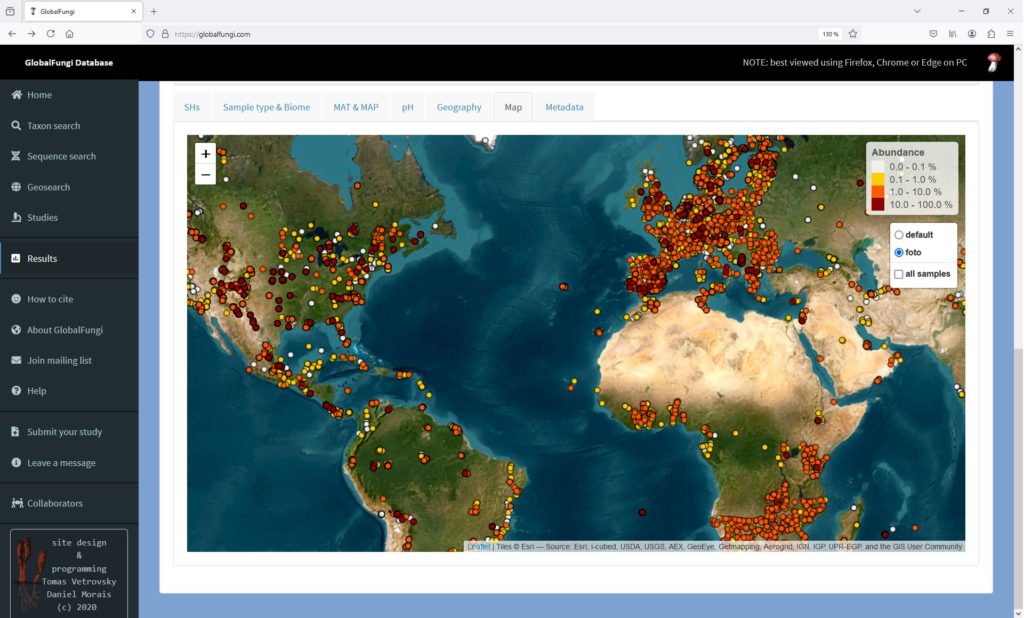Research ecology, physiology and biochemistry of microorganisms in the environment
The research in the laboratory covers the ecology, physiology and biochemistry of microorganisms (especially fungi and bacteria) in the environment, especially in soils, plant roots, plant litter, and deadwood. The drivers of composition of environmental microbiomes, the physiology of microorganisms in their natural habitats as well as in laboratory cultures and their contribution to ecosystem processes are studied from individual samples up to the global level. Importantly, global drivers of microbial community composition and biogeography are studied using the combination of experimentation and data science, utilizing the databases developed by the laboratory: GlobalFungi and GlobalAMFungi. In addition, research also focuses antibiotic resistance and horizontal gene transfer under natural conditions, yeast ecophysiology and biogeography of micro- and macroorganisms.
Studied ecosystems span a wide range of temperate, boreal and tropical forests, grasslands, arctic and alpine tundra, agricultural croplands and pastures and anthropogenic environments such as post-mining spoil deposits. The research seeks to understand the basic roles of microorganisms in ecosystems as well as to analyse and predict the effects of global change on ecosystems and their functioning and to explore the effects of ecosystem management strategies on biodiversity and functioning of ecosystems.
The laboratory cares for the Culture Collection of Basidiomycetes and offers services in high-throughput seguencing and bioinformatics.
Effects of tree harvesting on soil microbime

Collection of litter at the study sites of forests in the Bavarian Forest National Park helps to assess the productivity of beech and spruce trees under various management conditions.
In the collaboration with the Join Genome Institute and Environmental Molecular Sciences, we study, together with our German and Finnish collaborators the effects of tree harvesting on soil microbime under various conditions of plant root-fungal symbioses: ectomycorrhizal, ericoid mycorrhizal and arbuscular mycorrhizal. Study sites are located in Germany and Finland and microbiology is combined with greenhouse gas monitoring, metabolomics and functional analyses of the forests, such as litter and root production and tree growth. The research is supported by the United States of America Department of Energy that grants us the access to their user facilities.
Project HoliSoils
Clearcuts in peatland forests such as the one here in Ränskälänkorpi, Finland, are major sources of gases that promote global change, including methane and nitrous oxide. Their fluxes are analysed using eddy covariance tower and linked to the composition of microbial communities in the peat soil profiles.

Within the EU-funded project HoliSoils – “Holistic management practices, modelling & monitoring for European Forest Soils” (https://holisoils.eu/) we explore the effects of management and ecosystem-level disturbances such as wildfires, deforestation and drought, on microbial processes and C storage in soils. The project also contributes to the development of smart forestry approaches that help to counteract the effects of global change and promote C storage in soils. Within the project, our group is responsible for microbiology and soil chemistry analysis.
Effects of selective logging and clear-cutting on soil microbiology in Slovenia

Beech trees grow rapidly in the forest stands of Dinaric mountains in Slovenia that were subject to thinning. The continuous cover forestry appears to be a viable method of management in this highly fertile region.
Together with our partners from the Slovenia Foresty Institute, we assess the effects of selective harvesting and clearcutting on the microbiology of soils and regeneration of forest stands in calcareous regions in Slovenia. The research seeks to find the optimal strategy to manage these highly productive forests. This project is supported by the Czech Science Foundation.
Origin, development and functioning of microbial communities in dead wood
Dead tree branches and trunks such as this one from the Ranšpurk National Reserve, Czech Republic, represent significant stocks of carbon and mineral nutrients that would never be available without microbial decomposition, the concerted action of fungi and bacteria. Deadwood retention substantially improves ecosystem health by promoting soil quality and biodiversity.

Deadwood is an important stock of carbon and nutrients in forest ecosystems, especially in natural forests where wood is not harvested. Our research aims to understand the assembly rules of microbial communities that develop on decomposing wood and promote its decomposition and nutrient recycling within ecosystem. The intricate collaboration of fungi and bacteria, as well as insects, results in a plethora of developmental paths that the dead plant biomass may follow. Our deadwood studies include sites in the Czech Republic, e.g. the Zofin Natural Reserve, the longest standing natural forest in Central Europe, as well as in Germany and around the world. Deadwood-related projects are supported by the Czech Science Foundation, Deutsche Forschungsgemeinschaft and European Union.
Biodiversity and ecology of fungi

Fusarium fungi belong to important pathogens that affect the health of humans, animals, but also plants such as bananas. The map accessed from the GlobalFungi database shows that they are ubiquitous in global soils, some of them waiting for their chance to establish as pathogens on their host.
To explore the global biodiversity and ecology of fungi, our group established and maintains the database GlobalFungi, the world’s largest FAIR, publicly accessible database on microbial communities in natural habitats spanning from terrestrial ecosystems to deep ocean. So far, more than 80 000 samples from almost 1000 scientific publications were compiled that give everyone the opportunity to analyse fungi in the global context. The database made it possible to estimate the global fungal diversity at slightly more than 6 million predicted species of fungi and identified the habitats and locations where fungi are underexplored. The sister database GlobalAMFungi contains similar data on the economically important fungi forming arbuscular mycorrhizae that promote the growth of multiple crops and sustain ecosystem health. Database development and maintenance was supported by the Czech Science Foundation and by the infrastructure ELIXIR-CZ.